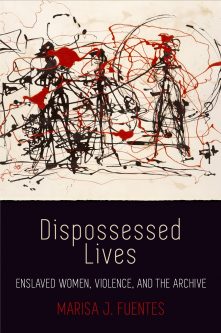
It’s also about specific stories: the women runaways identified in newspaper ads by the scars on their bodies, testifying to the horrors inflicted on them which are now (additional horror) also the only remaining traces of their existence. So the book is about the necessity of imaginative leaps and honesty about the distortions in the historical record. The underlying theory and stories are both really interesting: Fuentes is trying to reconstruct the lives of enslaved women in Barbados through a historical record that bears essentially no direct traces from them, while the people who did make records about them had incentives to distort reality. This book is really heavy with jargon, only about half of which is useful (I think that if you’re going to use “elucidate” or “delineate” more than once a chapter, you should be really really sure it is the best word for the job, and it often wasn’t). By vividly recounting enslaved life through the experiences of individual women and illuminating their conditions of confinement through the legal, sexual, and representational power wielded by slave owners, colonial authorities, and the archive, Fuentes challenges the way we write histories of vulnerable and often invisible subjects. In the process, Fuentes interrogates the archive and its historical production to expose the ongoing effects of white colonial power that constrain what can be known about these women.Ĭombining fragmentary sources with interdisciplinary methodologies that include black feminist theory and critical studies of history and slavery, Dispossessed Lives demonstrates how the construction of the archive marked enslaved women's bodies, in life and in death. Fuentes takes us through the streets of Bridgetown with an enslaved runaway inside a brothel run by a freed woman of color in the midst of a white urban household in sexual chaos to the gallows where enslaved people were executed and within violent scenes of enslaved women's punishments.

Fuentes creates a portrait of urban Caribbean slavery in this colonial town from the perspective of these women whose stories appear only briefly in historical records.


In the eighteenth century, Bridgetown, Barbados, was heavily populated by both enslaved and free women.


 0 kommentar(er)
0 kommentar(er)
